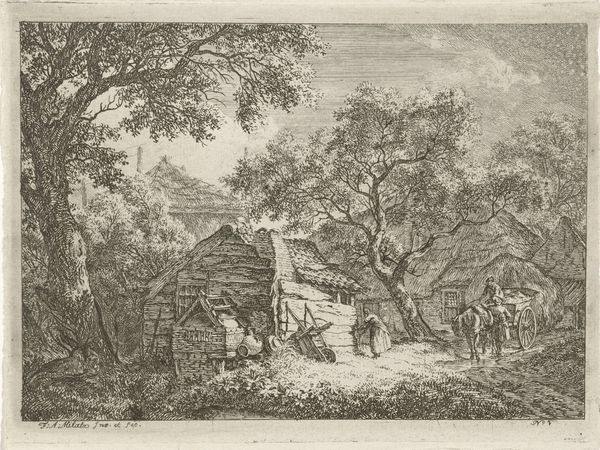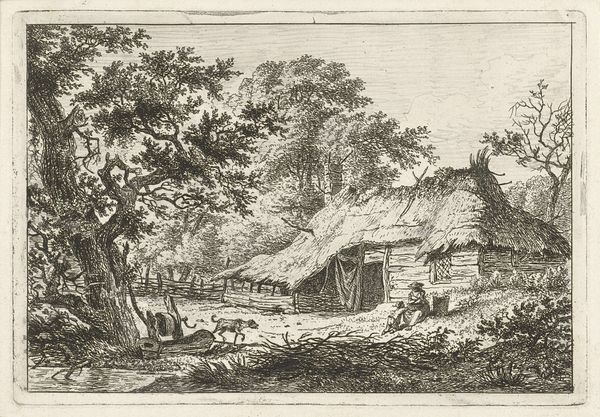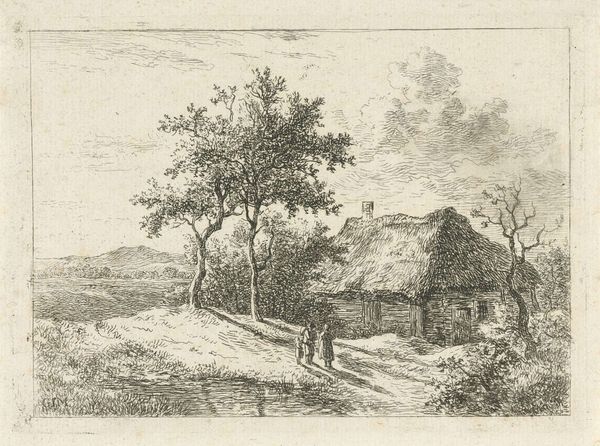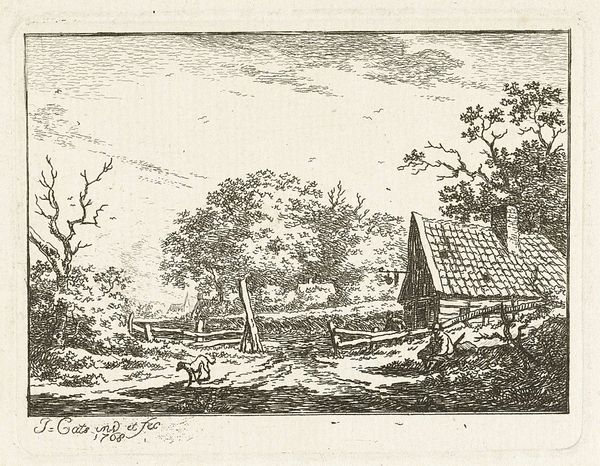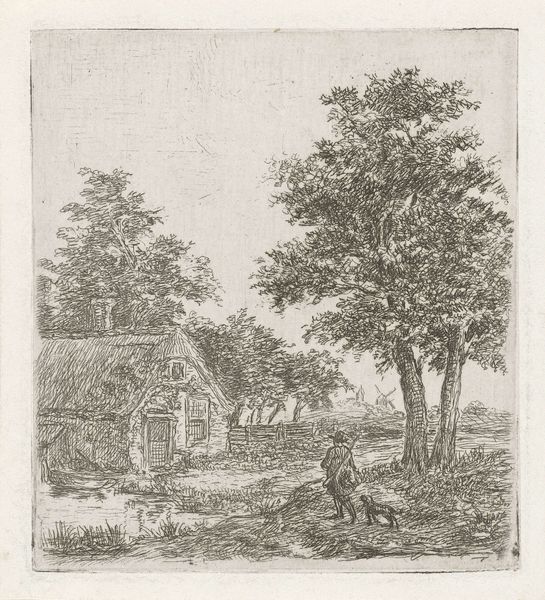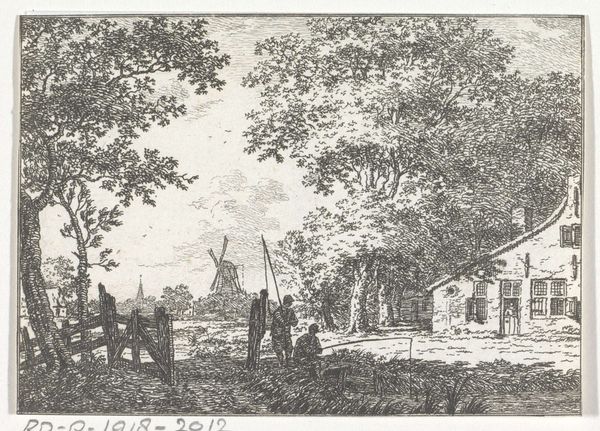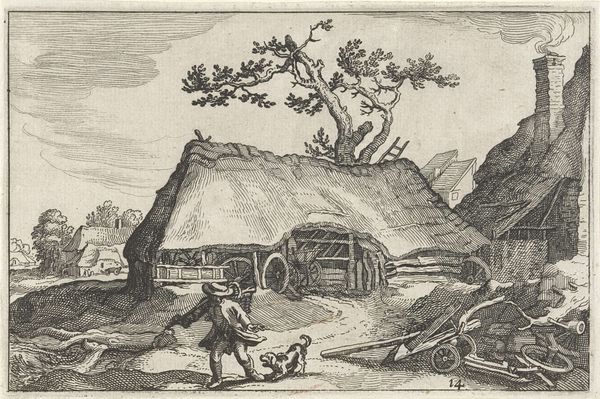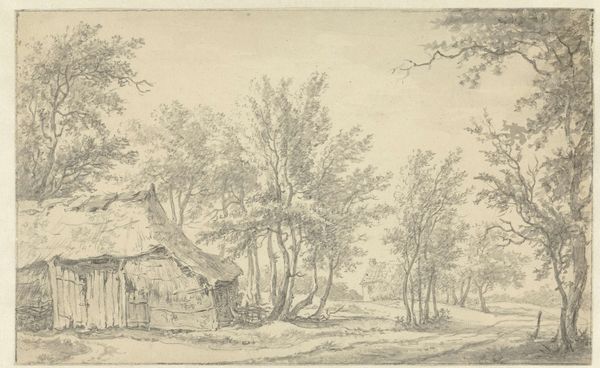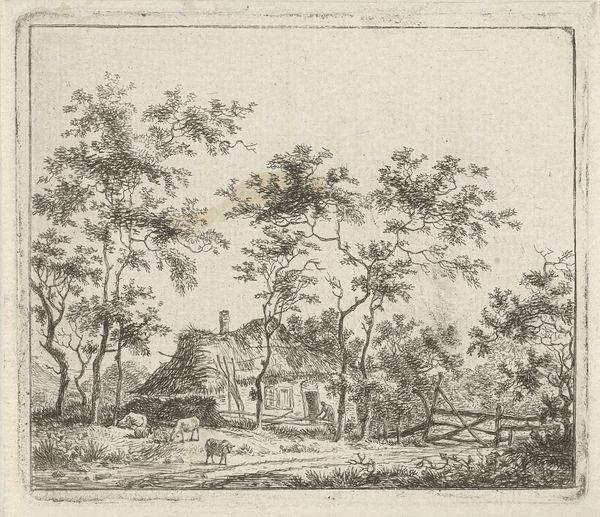
print, etching
#
dutch-golden-age
# print
#
etching
#
old engraving style
#
landscape
#
road
#
forest
#
realism
Dimensions: height 102 mm, width 157 mm
Copyright: Rijks Museum: Open Domain
Curator: This print, titled "The Road to Heemstede", is attributed to Claes Jansz. Visscher and dates from 1612 to 1652. It’s currently held in the collection of the Rijksmuseum. Editor: It has a charming pastoral feel. The etched lines give it such a textured surface. The dark density of the forest juxtaposed against the lighter path draws the eye into the composition. Curator: Absolutely. Visscher masterfully uses etching to capture the nuanced textures of the natural landscape and the rustic details of daily life in the Dutch Golden Age. Consider the paper itself – likely locally produced – and the economic forces that allowed artists to specialize in prints, catering to a growing merchant class eager for accessible art. Editor: Speaking of materials, note how the black ink, when carefully layered, creates such a convincing depth. The composition has three very clearly defined zones, marked not only by dark/light contrast, but by the shapes the lines produce. Curator: It’s also worth examining the symbolism embedded in this seemingly simple scene. The road itself, while named, is also a metaphor for life’s journey, a popular motif at the time, given the growing focus on civic responsibility, combined with personal spirituality. Editor: You’re right. And structurally, that road leads the viewer right into the heart of the image. The artist’s control of light, framing a pathway through dense woods, creates a sense of inviting yet slightly uncertain adventure. Curator: The print underscores a pivotal point in Dutch history, marked by trade routes expanding due to mercantilism, changing urban-rural dynamics, and a nascent market that fueled art production for the wealthy merchant class. Editor: From a formal standpoint, it's a very cleverly designed piece. The eye travels comfortably from the foreground, where the shepherd drives his flock along that inviting road, past the central building, finally dissolving into the background, a soft haze of light, shape and line. The overall balance, despite the relatively small size, provides a certain level of monumentality. Curator: Considering its production and distribution really connects us to a broader narrative about the commodification of images and how prints like this were disseminated. I think, the historical weight combined with visual lightness makes it a unique snapshot into Dutch culture. Editor: Indeed. Reflecting on its composition reveals the subtle details. The use of line, dark and light – really illustrates the powerful potential that prints possess to influence a wide audience with accessible art.
Comments
No comments
Be the first to comment and join the conversation on the ultimate creative platform.
